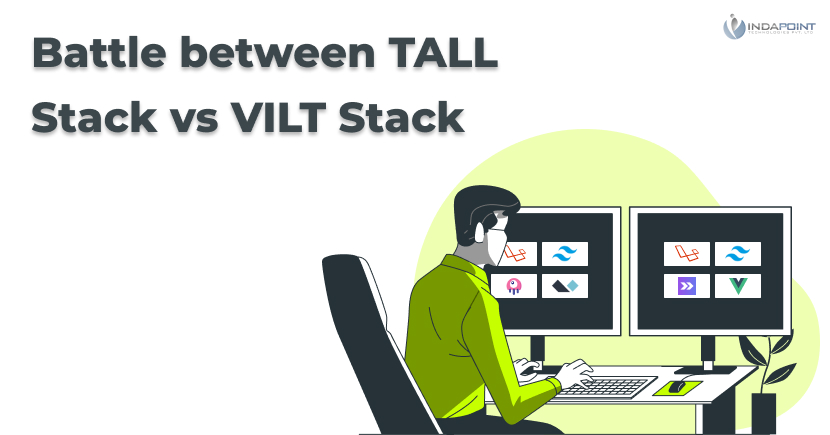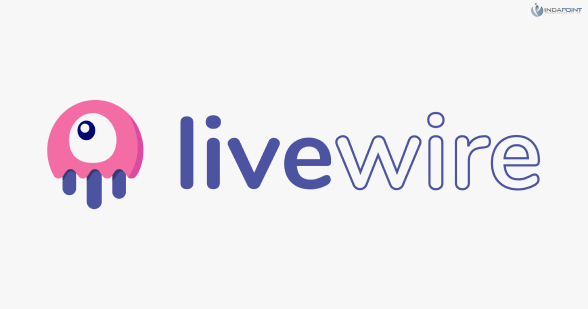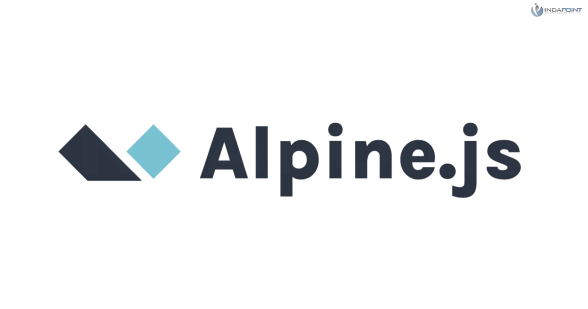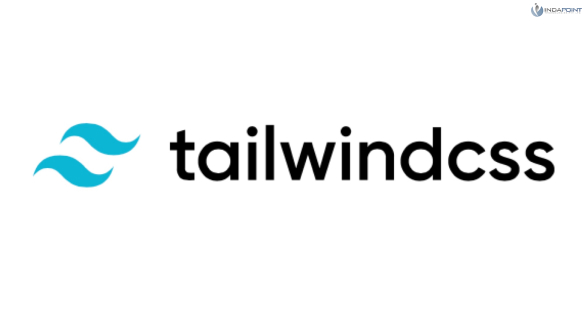Battle between TALL stack vs VILT stack
July 4, 2022

Overview: Stack
A stack is a group of software components that are intended to work together as a single unit and are frequently required to do so. There are as many stacks as there are fish in the water, but a stack’s usability in actual projects and whether or not the resulting product is usable, manageable, and scalable determine if it is good or poor. Depending on the project, there are a number of reasons why you would favor one stack over another. In general, newer does not always equal better.
The TALL stack and the VILT stack are the two stacks that will be discussed in this article.
TALL stack
The Laravel community’s libraries are used in the TALL stack, a full-stack development approach. It has tools that let you develop apps with a smaller set of programming tools and an emphasis on the backend without writing a lot of JavaScript. Without requiring a comprehensive Javascript framework, PHP developers can create applications much more quickly. But today’s technology gives us a wide range of possibilities, especially if we want to implement various features and activities much more quickly and successfully.
The TALL stack includes various technologies which are listed below:
Tailwind CSS
The utility classes in Tailwind let you write custom CSS without actually writing any CSS. Build your own unique designs with Bootstrap’s simplicity and handwritten CSS’s adaptability.
Tailwind CSS is a highly flexible, low-level CSS framework that provides all the building blocks required to create custom designs without requiring you to struggle to overcome obnoxiously opinionated styles. Tailwind is a CSS framework rather than a UI library. It doesn’t have an opinion. Although it allows us the ability to create a component using the available utility classes, it does not specify how a component should look.
Laravel

Laravel offers a vast array of features that fully exploit both the known and undiscovered capabilities of PHP. Laravel offers a broad range of features that enhance the development process and assist you in building a testable and scalable codebase. It is also crucial to keep in mind that when developing a web application using Laravel, you will have access to a vast number of open-source packages that have already been created and are being maintained by the enormous Laravel community. The process of building and developing web apps is greatly sped up by having a wide range of tools at your disposal.
Livewire

The TALL stack’s final and most crucial component, Livewire, comes after Laravel, naturally. Livewire is a full-stack framework for Laravel that gives developers a means to make responsive applications using only PHP classes and components instead of javascript. Javascript is still present and undoubtedly still doing its magic, but developers don’t need to be aware of it. Livewire’s JavaScript library sends a request to the website when a user makes a change, and the web server processes the request and returns a modified object. Livewire then updates the front end in accordance with recent adjustments. It appears to be a SPA app because the user won’t be able to see anything.
The initial output is produced on the server via Livewire. This enhances the SEO-friendliness of the framework. This is a fantastic stack to employ, especially if you want to create a dynamic and reactive app but are not yet prepared to delve into a full JavaScript framework like Vue.js. While utilizing the Livewire framework, there are some specifics you should consider. The ability to significantly reduce development time by utilizing the Livewire platform is one of the TALL stack’s major benefits. Cutting the entire web development cycle may save businesses money and time while also enabling programmers to increase their productivity, which may be a financially profitable path.
The TALL stack’s use of HTTP requests is, of course, its major drawback. It’s not all roses and sunshine, after all. It’s quite simple to miss something in the process and generate many more requests than would otherwise be necessary because it uses HTTP requests for all of the dom-manipulation and communication between frontend and backend. There will also be more requests made to the server as the project develops and more and more elements of the website need to be responsive. The application’s debugging process itself could be somewhat annoying.
Alpine

Alpine should be included in addition to the TALL stack when discussing additional ideas. For integrating JavaScript functionality into HTML, there is a lightweight front-end framework called Alpine.js. It is most effective when only a few lines of JavaScript are required for the project, such as when only one or two sidebars, tabs, windows, or image selection are required. The framework is perfect for server-side-rendered programs like Laravel that call for your ability to manage specific DOM elements. Because it lacks a virtual DOM, it can be put up more quickly and has no construction phases.
Alpine.js offers the reactive and declarative features of popular frameworks like Vue and React at a much lower price. Anytime the need arises, you can modify your DOM and add interactive features. On the frontend side, you can probably meet the majority of your requirements. For instance, it exposes and hides DOM nodes, attaches data to inputs, watches for events, and adjusts the UI as necessary. There are additional assistance functions for alpine to interface with Livewire because AlpineJs is most frequently used with Livewire. For instance, by entangling data with livewire attributes or causing livewire events. If you utilize Livewire without any frontend tools, AlpineJs will undoubtedly become necessary at some point.
VILT Stack
The VILT Stack is comparable to the TALL Stack, with the exception that it was created using Vuejs rather than Livewire like the TALL Stack was. Using InertiaJS, you can also build SPAs without creating an API. This stack enables users to work quickly, offers general code cleanliness with clear responsibility separation, makes use of the best current CSS standards, and is reactive.
The VILT stack includes various technologies which are listed below:
Laravel
The open-source Laravel PHP framework was designed and developed by Taylor Otwell. It facilitates the development of web applications. Since Laravel adheres to the MVC pattern, getting started with it won’t be too difficult if you have a firm grasp of the pattern and a working knowledge of PHP. Laravel uses pre-existing packages in addition to coming up with its own original solution to well-known issues. The resulting web application is more standardized, making it simpler than ever to add new features and replace old ones.
Tailwind CSS

Tailwind is a low-level utility-first CSS framework, each class you create doesn’t have to include a whole bunch of CSS properties; rather, most of the time, a class name will just contribute one. As a result, the developer finds it very simple to experiment with different designs and tweak any component without worrying about how their changes will influence other components.
Inertia.JS

Laravel and Frontend, in this example VueJs in the case of VILT Stack, are connected by InertiaJs. Consider inertia as the material holding the two together. This is done through inertia using adapters. Currently, we have two server-side adapters and three official client-side adapters.
In fact, inertia is a complex system. When something is multi-layered, you can apply as much abstraction as you like with inertia. You don’t need to adopt a different mindset in order to transmit data to the front end because, for the most part, you can use inertia to return views from controllers in the same way that you would from standard Laravel controller methods. It makes use of Laravel’s backend. It acts as the connecting factor between Laravel and Vue. You will be able to migrate this to Laravel, for example, rather than utilizing Vue to manage your routing. So, a server-side rendered Vue js application will be delivered to you. It blends the best features of client- and server-side JS.
Vue.JS

Fast and lightweight libraries include Vue.JS. Similar to React, VueJS makes use of a virtual DOM and offers a rapid, reactive method for resolving front-end issues. Reusable component development is made elegantly with VueJs. The traditional approach to components for vue is to have script and ‘template’ tags in a single component; you can also have style but it is not necessary. Although you can make components similar to what the ReactJs method is, this is not the ReactJs way. It is simpler to read and manage the codebase because the HTML and script portions of the code are separated. If you’re unsure of when to utilize Vue.js, you should be aware that just because it’s lightweight doesn’t imply it should be used on every project. Vue will always be a little slower than simple HTML because it uses js to render and update dom elements. So you will probably appreciate vue.js’ company if you plan to develop an action-heavy frontend website or application.
The major drawback of practically all other frameworks, including vue.js, was their larger package sizes for larger projects. Code splitting and dynamic component loading typically resolve this, making it less of a problem overall. To improve the efficiency of the application, attempt to load as minimal JavaScript as you can when planning a project with vue.js.
Final Thoughts
The TALL stack is the ideal collection of technologies to use if you want your backend engineers to be equally effective on the frontend as they are on the backend. However, you will need to make certain trade-offs along the road. The VILT stack will give you additional alternatives for stability and scalability in the future because it is a more stable variant of the TALL stack.







